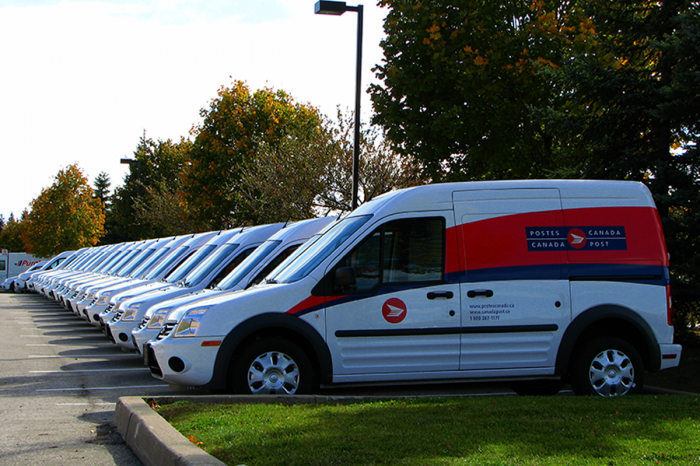Like this article? rabble is reader-supported journalism. Chip in to keep stories like these coming.
An ambitious proposal for Canada Post was launched yesterday, coinciding with a renewed push for the Leap Manifesto.
Lauded by David Suzuki, Naomi Klein, Clayton Thomas-Muller and others, the Canadian Union of Postal Workers (CUPW) and allies are hoping to transform the imperilled public postal service, which has nearly twice as many locations as Tim Horton’s, into a powerful force creating a low carbon society.
The vision is outlined in a 20-page document obtained by the Media Coop, Delivering Community Power: How Canada Post can be the hub of our Next Economy.
A 100 per cent electric vehicle fleet for Canada Post is proposed, along with vehicle charging stations at post offices. Postal banking would be made available, particularly benefiting Indigenous and rural communities under-served by traditional banks.
Loans would be offered for renewable energy installations like solar and wind, and for home energy retro-fits, with Canada Post connecting people with specialists to make it happen. Fresh produce would be delivered directly from farms to households, and existing Canada Post door-to-door service would check in on seniors, helping deliver medications.
“What’s powerful about Delivering Community Power,” says Naomi Klein, “is how it takes on economic, environmental and social issues at the same time. Our post offices can become centres of community care and economic development, while bringing emissions down — this is the kind of leap we need in Canada.”
One of the proposals, postal banking, may be unfamiliar. But countries around the world, like England, New Zealand and Brazil operate banking services through post offices. These “assist rural, remote and low income communities,” the document reads, “while providing new revenues for the postal service.” Canada Post operated such services until 1968.
The advantage of Canada Post being public is emphasized in the future vision: “unlike the big banks, our postal banks are owned by the people who use them,” the document reads.
Job creation is also highlighted. “Renewable manufacturing production. Retrofitting. Farming” lists Donald Lafleur of the Canadian Labour Congress. “Assistance for Elders. When I look at this proposal I see the potential for thousands of good jobs, in every community across the country. Let’s make it happen.”
To get the inside scoop I caught up with Dru Oja Jay, Director of Friends of Public Services, a partner organization with CUPW and others.
How did this proposal come together?
Postal workers have been advocating for a green postal service and a postal bank for years. On a parallel track, Naomi Klein has been pushing the unions to take a leadership role in greening the economy with a justice-based framework.
Friends of Public Services was having conversations with people working on campaigns in CUPW and conversations with people working on the Leap Manifesto, and at a certain point it made sense to bring it all together. The Leap folks loved the idea of launching a bold proposal about Canada Post for Leap Day, so here we are!
Why are you excited about it, and what comes next?
The climate justice movement and Indigenous resurgence activism like Idle No More are doing a great job of raising consciousness about a lot of different issues, but when you connect those efforts with a union that represents tens of thousands of people who are doing the work to maintain a whole sector of the economy, that work has the possibility of attaining a whole new dimension of transformative power.
I truly believe that if we can align the goals of Indigenous sovereignty, green jobs, and a just economy based on 100 per cent renewables, there’s potential to form a coalition that can transform what Canada looks like.
There is a perception some hold that unions are resistant to change and slow to act. What do you say to that in general, and in relation to this proposal in particular?
I don’t think it’s controversial to say that CUPW has set the tone for public sector workers and how they organize over the last number of decades. What’s exciting about that union in particular is that they have a leadership that knows they need to make bold moves, and really change the way people are thinking about things. That kind of necessity, combined with a very active organizational culture, makes them well-positioned to bring about the kinds of seismic shifts in approach and dedication to transformative organizing that I think a lot of people are waiting for.
This piece originally appeared on The Media Coop and is reprinted with permission from the author.



